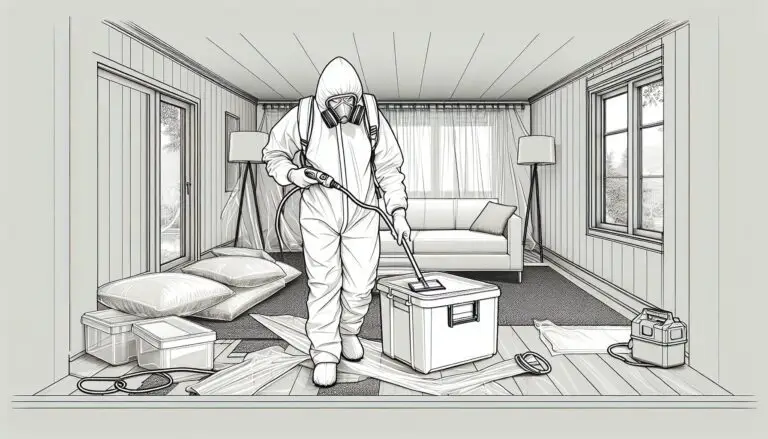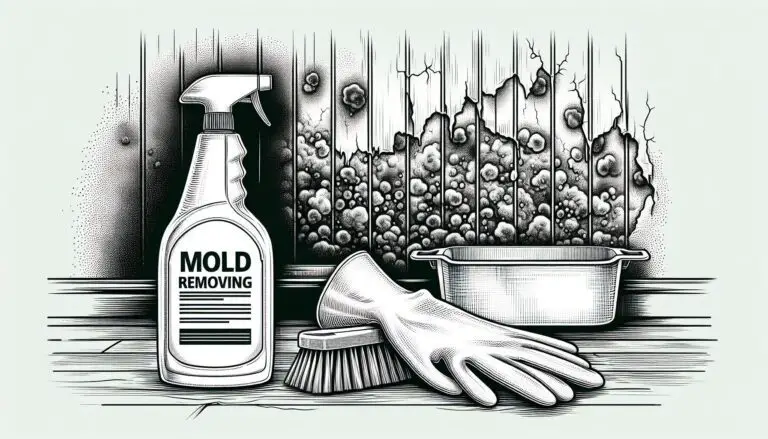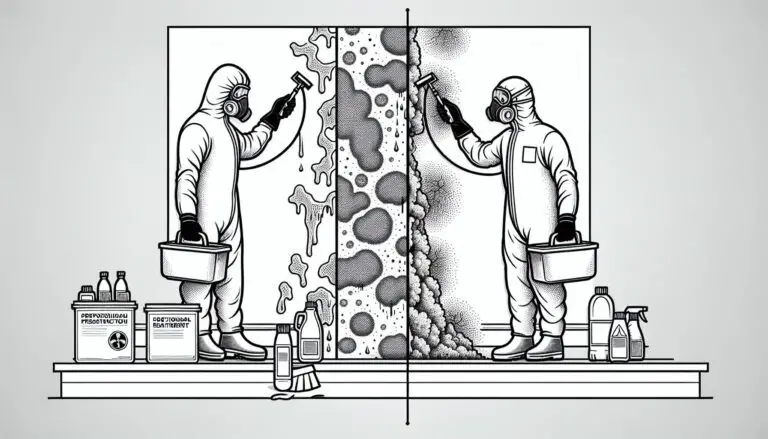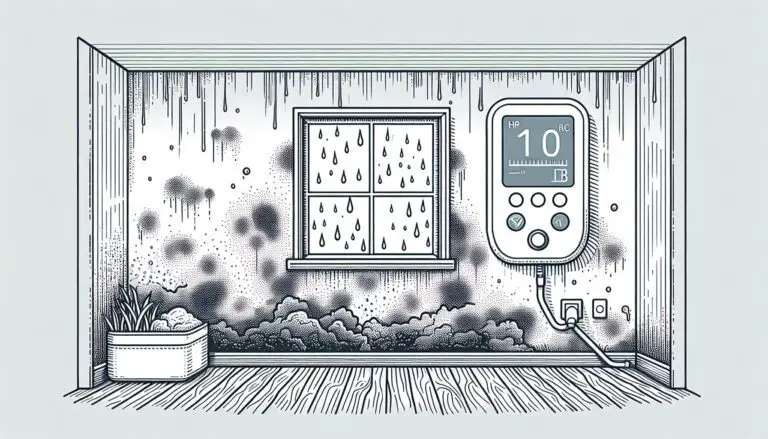Discovering mold in your home can be a daunting experience, but it’s a challenge you can tackle with the right approach. Mold damage repair is not just about aesthetics; it’s about restoring your home’s integrity and ensuring a healthy living environment. This article will guide you through the essential steps to effectively address mold issues and prevent their recurrence. From identifying the source of moisture to hiring professionals for extensive damage, you’ll learn how to navigate the process confidently. Let’s jump into the world of mold remediation and take the first step towards a mold-free home.
Understanding Mold Damage
When you encounter mold in your home, it’s crucial to recognize the potential damage it can inflict, not just on your property but also on your health. Mold thrives in moist environments, and its presence can be a symptom of deeper moisture issues. By understanding the damage mold can cause, you’re taking a vital step towards restoring your home’s integrity.
Mold damage goes beyond unsightly spots on walls or ceilings. It can degrade building materials, such as wood and drywall, leading to structural weaknesses. Over time, this deterioration can compromise the safety of your home, requiring significant repairs. Mold spores can also spread through your home’s HVAC system, clothing, and furniture, making it a pervasive issue that’s hard to eliminate without proper intervention.
The health implications of mold exposure should not be underestimated. Individuals with asthma, allergies, or weakened immune systems are particularly susceptible to the effects of mold. Symptoms can range from nasal stuffiness and eye irritation to more severe reactions like respiratory infections or skin rashes. Hence, addressing mold promptly is not only a matter of property maintenance but also of safeguarding your family’s health.
Identifying the source of moisture that’s allowing the mold to flourish is the first critical step in mold remediation. Whether it’s a leaky roof, high humidity, or inadequate ventilation, rectifying these issues will prevent further mold growth. If the affected area is large or if the mold is toxic, it’s advisable to hire mold remediation professionals. They’re equipped with the necessary tools and knowledge to safely and effectively remove mold from your home.
By grasping the extent of damage mold can cause, you’re better positioned to tackle the issue head-on. It’s a challenge that requires immediate attention to prevent long-term damage to your home and health. With the right approach, you can mitigate the effects of mold and take definitive actions towards creating a safer, mold-free living environment.
Identifying the Source of Moisture

Before you can tackle mold damage repair effectively, it’s crucial to pinpoint the source of moisture that’s allowing mold to thrive. Mold can’t grow without moisture, so identifying and addressing the underlying cause is your first line of defense in preventing future outbreaks.
Check Common Problem Areas
Start by inspecting areas in your home that are prone to dampness and water intrusion. These include:
- Roof leaks: Ensure your roof is in good shape. Missing, damaged, or old shingles can allow water to seep in, encouraging mold growth.
- Plumbing leaks: Look under sinks, around toilets, and along the lines of your water heater for any signs of leaking.
- Poor ventilation: Areas like your bathroom, kitchen, and laundry room should be well ventilated. Moisture can accumulate in these places, making them hotspots for mold.
Use Moisture Meters
Invest in a moisture meter to detect unseen problems. These handy devices can help you discover dampness in walls, floors, and ceilings without the need for invasive measures. A moisture level of more than 20% is typically cause for concern and warrants further investigation.
Examine Outdoor Drainage
Poor drainage around your home can contribute to mold issues by allowing water to collect against foundations or seep into basements. Ensure that gutters and downspouts are clear and that ground slopes away from your home’s foundations.
Identifying the source of moisture not only helps in effectively tackling mold damage but also prevents its recurrence. Once you’ve found and fixed the moisture problem, you’re well on your way to restoring your home’s integrity and ensuring a healthier living environment. Remember, in cases where the source of moisture is complex or the mold damage extensive, consulting with a professional may be your best course of action.
Assessing the Extent of Damage

Understanding the full scope of mold damage in your home is crucial before you can start any repair work. This step is not just about spotting visible mold patches but recognizing the hidden dangers that mold presents to your home’s structure and air quality.
First off, inspect common mold hotspots such as basements, bathrooms, and areas around windows where moisture accumulates. Don’t forget to check under carpets, behind wallpapers, and inside ventilation systems. Mold thrives in these less-visible places, often going unnoticed until it becomes a significant problem.
Next, consider enlisting the help of a professional mold assessor. They possess the tools and expertise to accurately determine the severity of your mold issue. Professionals use moisture meters and infrared cameras to detect mold in hidden areas, ensuring no spot is overlooked.
To get an idea of how widespread the mold damage might be, look out for:
- Musty odors, which indicate the presence of mold even if it’s not visible
- Discoloration or staining on walls, ceilings, or floors
- Warped walls or buckling floors, which can signal extensive damage beneath the surface
Assessment isn’t just about identifying the current state of mold in your home; it’s also about preventing future outbreaks. You’ll need to address the source of moisture that allowed the mold to grow in the first place. Whether it’s a leaky roof, high humidity levels, or poor ventilation, fixing these issues is key to a successful mold remediation plan.
By taking these steps to assess the extent of mold damage, you equip yourself with the knowledge needed to tackle the problem effectively. Remember, the goal is to restore your home to a safe and healthy environment—not just to remove visible signs of mold.
Steps for Effectively Removing Mold

When you’re tackling mold damage in your home, effective removal is crucial to restoring your living space’s safety and integrity. Here’s a concise guide to help you navigate the process.
Identify the Mold Source: Before you begin any cleanup, pinpoint the source of moisture causing the mold. This could be a leaking pipe, poor ventilation, or high humidity levels. Addressing this issue is vital to prevent mold from returning after you’ve cleaned it up.
Wear Protective Gear: Mold can pose health risks, especially during the removal process. Ensure you’re wearing gloves, goggles, and an N95 respirator or higher to protect yourself.
Isolate the Affected Area: To prevent mold spores from spreading, seal off the area you’ll be working in. Use plastic sheeting and tape for larger spaces or close doors for smaller rooms.
Use the Right Cleaning Solutions: For non-porous surfaces, a mixture of water and detergent can be effective. But, for mold-infested porous materials like drywall or carpet, removal and replacement are often necessary.
Dry the Area Thoroughly: After cleaning, ensure the area is thoroughly dried to eliminate any remaining moisture. Use dehumidifiers and fans to speed up the drying process.
Consult Professionals for Extensive Damage: If you’re dealing with a large mold infestation or one in hard-to-reach places, hiring a professional mold remediation service is recommended. They have the expertise and equipment to safely and effectively remove the mold.
Remember, dealing with mold is not just about cleaning up what’s visible. It’s about ensuring your home is safe and preventing future growth. By following these steps and staying vigilant about moisture control, you can maintain a mold-free environment.
Hiring Professionals for Mold Remediation
When the mold in your home moves beyond what you can handle with DIY methods, it’s time to consider bringing in professionals. Experts in mold remediation have the tools, knowledge, and experience to tackle extensive mold issues, ensuring your home is safe and mold-free.
Firstly, professional remediation services conduct a thorough assessment to determine the mold’s extent and source. This step is critical because merely removing visible mold doesn’t address the root of the problem: excessive moisture. By identifying and rectifying moisture sources, professionals prevent future mold growth.
Here’s a quick overview of the process:
- Assessment and Inspection: Detailed evaluation to map out the mold’s presence and source.
- Containment: Professionals use barriers and negative air pressure to prevent mold spores from spreading during cleanup.
- Air Filtration: HEPA filters remove mold spores from the air.
- Mold Removal: Depending on the surfaces affected, methods may vary from abrasive cleaning to complete replacement.
- Cleaning and Sanitization: Clean all non-porous surfaces and belongings.
- Drying: Fully dry the affected area to ensure no moisture remains.
The benefits of hiring professionals include:
- Safety: They wear proper protective gear and follow safety protocols to protect themselves and your family from exposure.
- Efficiency: With advanced techniques and equipment, professionals can effectively remove mold in a shorter timeframe.
- Prevention: Experts offer advice on how to prevent future mold issues, often addressing ventilation and humidity concerns.
Before selecting a mold remediation service, ensure they’re licensed and have good reviews or references. Discuss their approach, including how they plan to address safety concerns and prevent mold’s return. Remember, the goal isn’t just removing mold; it’s restoring your home’s health and integrity, making expert intervention a crucial step in the process.
Conclusion
Tackling mold damage is crucial for maintaining your home’s safety and structural integrity. Remember, identifying the source of moisture and addressing it promptly is key to preventing future outbreaks. While DIY methods can be effective for minor issues, don’t hesitate to call in the professionals for more severe cases. Their expertise not only ensures a thorough cleanup but also helps in safeguarding your home against future mold problems. By choosing a reputable mold remediation service, you’re investing in the long-term health of your home. Stay proactive, and your efforts will preserve your home’s integrity for years to come.






